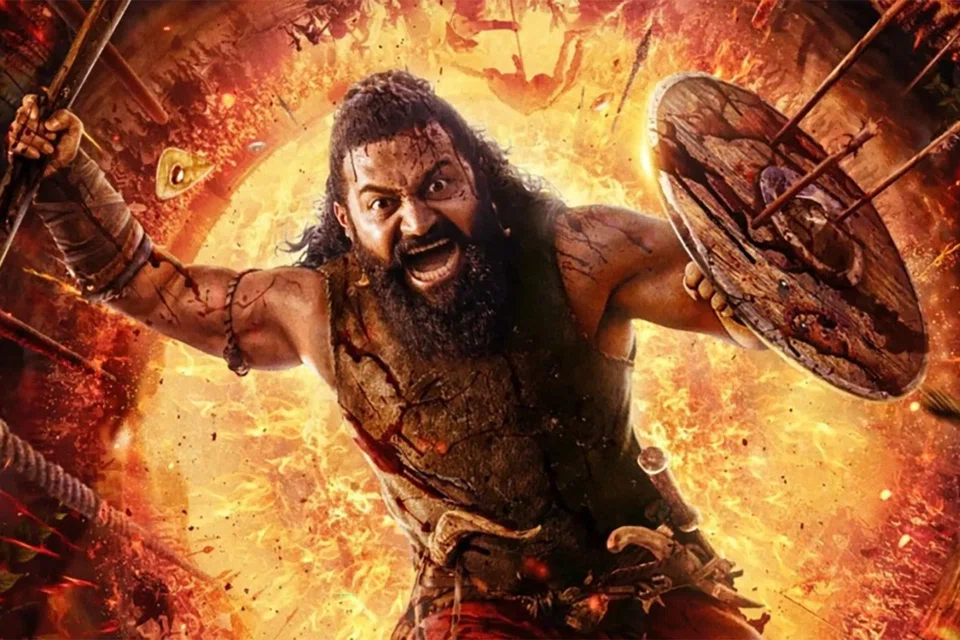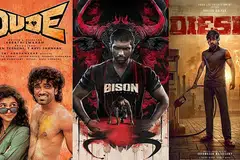South Indian cinema is witnessing a remarkable resurgence rooted in its oldest traditions.
Tales drawn from mythology, folklore, and regional legends are not just enchanting audiences – they’re redefining the box office game.
A case in point is Kantara: Chapter 1, which released on Oct 2, and has already amassed a staggering Rs725 crore (S$107 million) in worldwide box office collections.
With over Rs185 crore earned from Karnataka alone in just two weeks, this sequel has matched and perhaps surpassed the impact of its predecessor, Kantara (2022).
What makes this feat especially notable is that both films blend myth, spirituality, action, and emotion, all grounded in regional beliefs, while appealing to pan-Indian audiences, noted NDTV.
The success of Kantara is not an isolated case. A growing number of South Indian filmmakers are reviving tales from local lore, folklore, and mythology, presenting them through a modern cinematic lens.
Director-actor Rishab Shetty, who helmed and starred in both Kantara films, has shown that rooted storytelling – when done with sincerity – can transcend language and regional barriers.
Joining this league are films like SS Rajamouli’s Baahubali series, Prasanth Varma’s Hanu-Man, Ashwin Kumar’s animated Mahavatar Narsimha, Dominic Arun’s Lokah Chapter 1: Chandra, and Vishnu Manchu’s Kannappa.
These films, each deeply inspired by mythological narratives, are not only critical successes but also box office giants.
The worldwide collections (as of October 2025) tell a compelling story: Baahubali: The Beginning – Rs650 crore; Baahubali 2: The Conclusion – Rs1,788 crore; Mahavatar Narsimha – Rs326 crore; Hanu-Man – Rs295 crore; Lokah Chapter 1: Chandra – Rs302.5 crore; Kannappa – Rs43.95 crore.
India’s net collections mirror this trend. While Baahubali 2 earned over Rs1,000 crore domestically, even newer titles like Lokah and Hanu-Man have grossed over Rs150 crore and Rs200 crore respectively.
Hombale Films, one of the biggest champions of mythological narratives, has delivered two major hits this year – Kantara: Chapter 1 and Mahavatar Narasimha.
Hombale co-founder Chaluve Gowda told NDTV: “Stories born from folklore and mythology connect directly to the soil and spirit of our people. These are not just tales – they carry emotion, faith, and cultural memory.”
He added that today’s audiences still seek authenticity and emotional connection, and that films like Kantara succeed because they are “local in soul and universal in reach”.
Similarly, Dulquer Salmaan’s production house backed the Malayalam hit Lokah Chapter 1: Chandra, which reimagines the tale of the yakshi (female nature spirit). With its success, Dulquer has already announced a sequel.
While South Indian films inspired by myth and folklore are thriving, similar Bollywood attempts – like Brahmastra and Adipurush – have had mixed receptions.
Critics argue that South filmmakers emphasise emotional storytelling, while some Hindi films focus too heavily on CGI and star power.
Film critic Bharath notes: “South filmmakers commit fully to the story. It’s not just about spectacle or a ‘masala’ mix of genres. They ground their narratives in emotion, which makes even mythological tales relatable.”
Producer Gowda emphasises that it’s not about South versus North. “It’s about sincerity. When filmmakers treat mythology with reverence, not just fantasy, the emotional truth reaches people,” he said.
He believes mythology should not be “overproduced” but should stay grounded in local belief systems.
Directors like Rajamouli, Rishab, and Prasanth have all spoken about their fascination with India’s epics and their desire to reinterpret these stories for modern audiences.
Rishab will next appear in Jai Hanuman, directed by Prasanth.
Rishab, known for his spiritual leanings, recently said, “This story is close to my heart. I have deep faith in the divine, and this film reflects that belief.”
Prasanth echoed the sentiment: “With Hanu-Man, I wanted to create an indigenous superhero – one who is culturally rooted, with emotions at the core.”
The growing appetite for culturally rich stories and the massive box office potential they hold, suggests this is more than a passing trend.
The South’s success is inspiring more filmmakers to dig into local traditions and rethink how mythology can be interpreted cinematically.
Producer Gowda sums it up best: “Every region has its own cultural pulse. It’s not about being more or less rooted, but about how sincerely filmmakers connect craft, culture, and emotion with their audience.”


